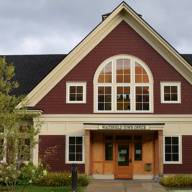There’s been talk in the Harwood Unified Union School District (HUUSD) in recent months about the use of prone restraints and seclusion among students in our schools. Data showed that in 2017-2018, Brookside Primary School in Waterbury had the highest incidence of these practices in the state (those numbers have gone down slightly in the past few years but continue to raise concern). According to the Vermont Agency of Education, prone restraints and seclusion are only to be used when a student’s behavior poses an imminent threat and substantial risk of physical injury to the student or others and when less restrictive interventions have failed or would be ineffective.
This warrants an examination of these practices in our schools and whether there are more effective and less traumatic measures that may be taken. Imagine being a child held down on their stomach or left alone in a room for hours.
These practices can have real psychological impacts. According to the American Psychological Association on seclusion in prisons, “Deprived of normal human interaction, many segregated prisoners reportedly suffer from mental health problems including anxiety, panic, insomnia, paranoia, aggression and depression.” If seclusion can have these impacts on adults, what might it do to children? (Of course, kids aren’t kept isolated for days or weeks, but even hours can have serious effects.)
The HUUSD has commendably taken up this issue and will be analyzing the use of such practices in our district this school year. Pending that analysis, the district has put a moratorium on using prone restraints in HUUSD schools. The task force will also be looking at implementing more training for teachers, staff, and administrators to keep our students safe.
There are times when drastic measures do need to be taken in order to maintain a safe learning environment for everyone, but are there other ways we can go about it? How can we deescalate situations promptly and effectively with minimum harm to our students and staff? These are some of the questions the task force and school board will consider over the coming months.
Many states have banned the use of prone restraint and seclusion in schools. If these states can find other effective interventions, shouldn’t we be able to, too?
-ENF












